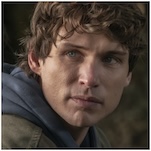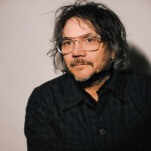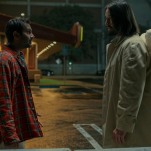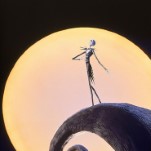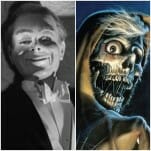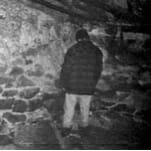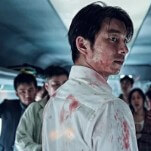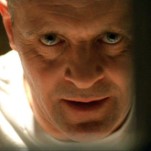Before Megalopolis Put a Mic in the Theater, Twixt Was Meant to Be Edited on the Fly
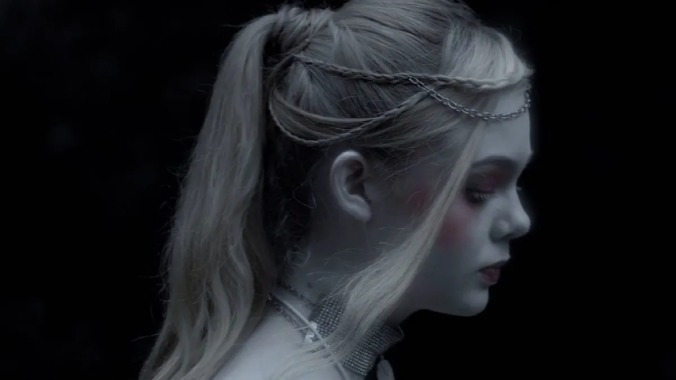
Francis Ford Coppola turned heads at at this year’s Cannes Film Festival when at a press screening for his self-funded, longtime passion project Megalopolis, a man approached a microphone near the screen and asked Adam Driver’s character, Cesar Catilina, a question, to which the on-screen Driver responded. It was a William Castle-like stunt, not much of a groundbreaking bit of expanded cinema, and besides a few-odd IMAX showings here and there, it is not a part of Megalopolis as a whole. This showman’s stunt, like so much from Coppola, actually has some more daring roots to it then the more superficial (and achievable) effect we have today. From an interview with Coppola in The Telegraph, we know that originally sequence was meant to incorporate a voice recognition software that would allow audiences themselves to ask Cesar a question, and then the projector system would sort to find the clip of Driver giving the more relevant response. This isn’t much more mechanically complex than what role-playing videogames have been doing for the better part of 30 years, but in a time when cinema is in a crisis of audience passivity (indeed, Scorsese describing the Marvel-phenomenon as “closer to theme parks” than what he considers cinema is relevant here), just the act of demanding engagement feels vigorous and essential.
Megalopolis was by no means Coppola’s first attempt at expanding the boundaries of cinema. Infamously, Coppola nearly doubled the budget for One From the Heart, revolutionizing previsualized filmmaking with his “electronic cinema,” initially with the ambitions of making a live film—wherein the whole film is shot, edited and mixed live like a TV broadcast—à la Playhouse 90 movies like John Frankenheimer’s The Comedian. Coppola would continue to be obsessed with this live-broadcasted production, giving a masterclass on it at UCLA in 2016, and the following year publishing a book on the subject. Often overlooked on this topic, though, is Twixt, which was Coppola’s last feature film until Megalopolis hit screens, and concluded a cycle of artistically daring and personal films (with Youth Without Youth and Tetro preceding it) all shot digitally on the revolutionary Sony HDW-F900.
On paper, Twixt is a cheap genre movie, one as low-rent a B-picture as the film’s protagonist Hall Baltimore (Val Kilmer) is a “bargain basement Stephen King.” Baltimore stops along his failing book tour in some dingy highway-side town that, according to the over-enthused Sheriff Bobby LaGrange (Bruce Dern) is full of secrets, including a serial killer. Baltimore needs money and a story, so he sticks around. In an alcohol-induced stupor, he wanders through the digitally blue night towards the old Chickening Hotel where, according to locals, Baltimore’s hero Edgar Allan Poe once stayed. Along the way, he meets the mysterious, ghostly young girl V (Elle Fanning), a fan who reminds Baltimore of his daughter. When they get up to the Chickening, she stops scared—there’s something bad in there. We soon find out in the surreal blue-tinted, black-and-white night (with accents of red splashed in, not unlike the use of color in Rumble Fish), that there are a dozen children buried underneath the hotel, murdered by the mad pastor who controlled them, with the 13th under his care escaping. Baltimore has inspiration for a new book.
Nestled within this airport novel horror story is one of Coppola’s most deeply personal confrontations of a past that had been haunting him for 25 years: the death of his eldest son, Gian-Carlo, in a freak boating accident during the filming of Gardens of Stone. This tragedy forms the emotional core of the rest of Coppola’s filmography up to the point of Twixt—an obsession with family, loss and the control of time. Much of Coppola’s narrative choices become obvious when this is considered. The Godfather Part III posits that the fate worse than death for Michael Corleone (Al Pacino) is the loss of his daughter (played by Francis Ford’s youngest, Sofia Coppola). Twixt is the most direct confrontation, with the ghost of Edgar Allan Poe (Ben Chaplin) ultimately revealing to Baltimore that the book he is researching and hallucinating was an exploration of himself all along, seeing a vision of his daughter’s death as she is killed in an accident much the same to Francis’ son. Coppola, in his Gothic voyaging, is looking for a way to reconcile his own grief.
It is not just the content that Coppola uses in this exploration, but the form itself. Twixt was originally envisioned as an expanded cinema project, with Coppola commissioning the design of a live-editing software that would allow him to re-cut the film on the fly, moving around scene orders, music cues, or even pick between takes. This didn’t necessarily materialize, although it was demonstrated at San Diego Comic-Con in 2011.
-

-

-

-

-

-

-

-

-

-

-

-

-

-

-

-

-

-

-

-

-

-

-

-

-

-

-

-

-

-

-

-

-

-

-

-

-

-

-

-









